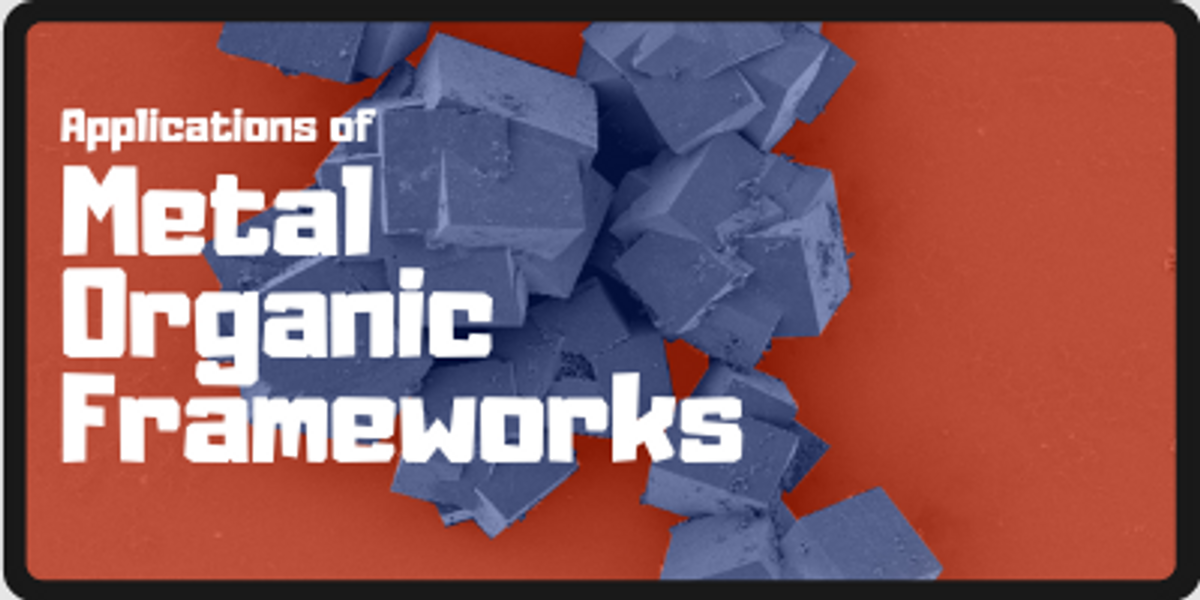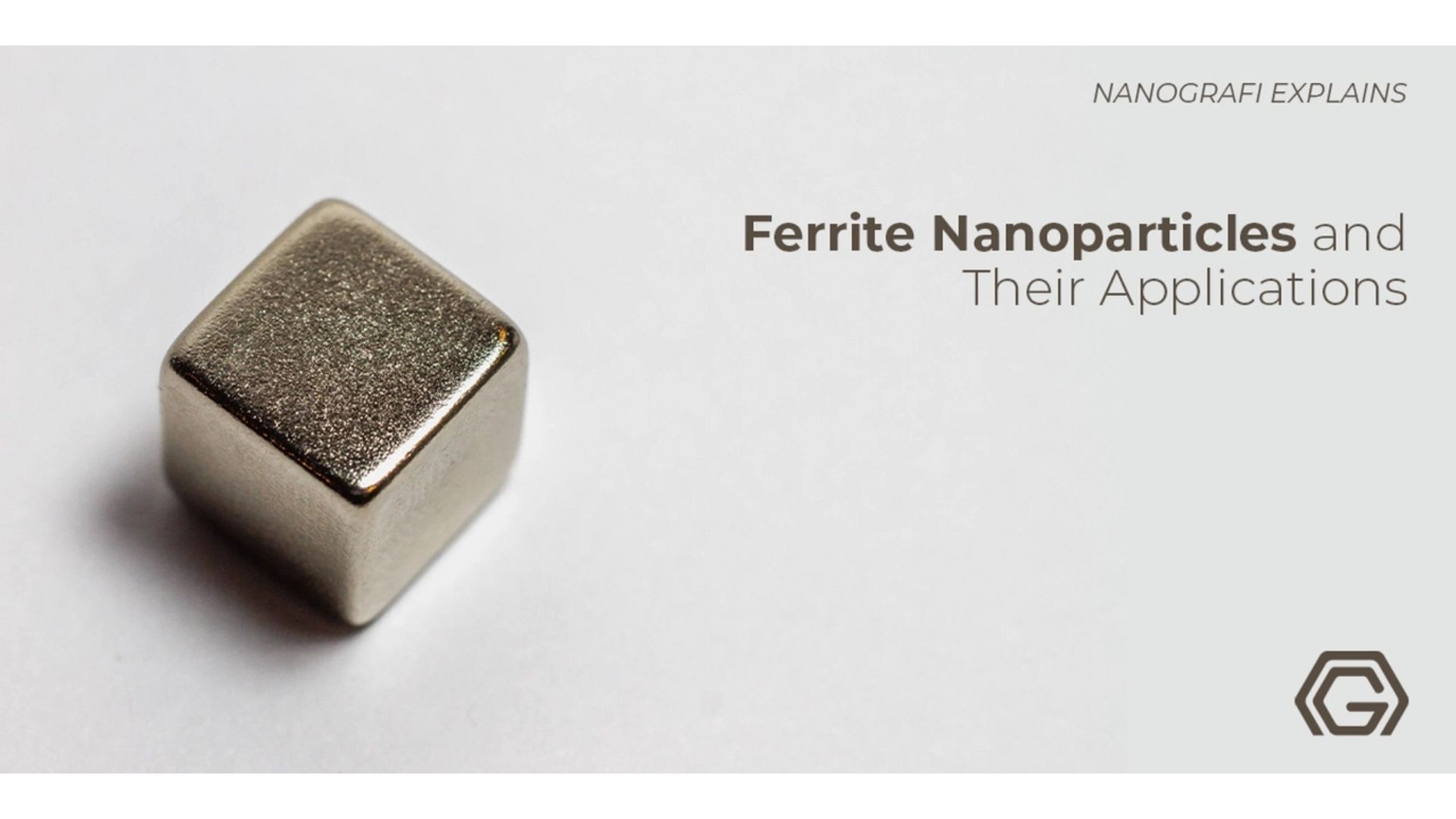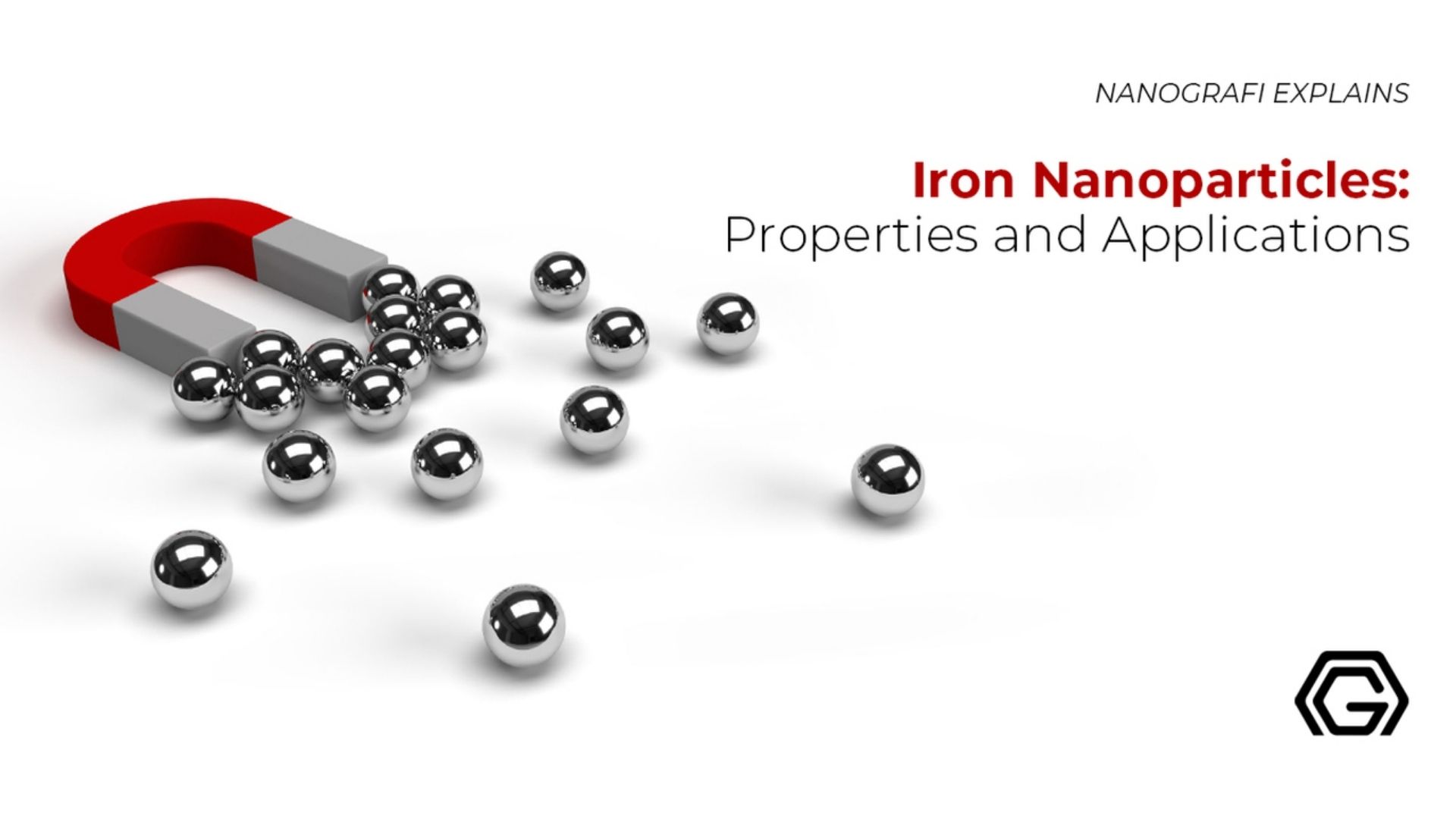What are the Applications of Metal Organic Frameworks?
Metal organic frameworks are versatile compounds with unique properties.
Their tunable porous structure is exploited by numerous different application areas such as renewable energy, environmental applications, catalysis, sensors, and biomedicine. Metal organic frameworks (MOFs) are porous crystalline structures with high surface areas. The structure of MOFs is constituted by inorganic secondary building units (SBUs) and organic linker molecules between them.
Introduction
SBUs are generally metal ions, rare earth elements or lanthanide series while organic linkers are ionic or neutral organic molecules. This dual nature of MOFs allows great manipulation over their structure. By combining different SBUs with different linkers, it is possible to obtain various different structures with different properties. In general, the porous structure of MOFs makes them a great candidate for gas storage, adsorption and separation applications. They have been in the center of many types of research due to their unique properties.
Energy and Environmental Applications of Metal Organic Frameworks
The rapid rise of technology and its plateau of gifts come with a price. While technology makes our lives a lot easier it has also dramatically increased global energy consumption. It is expected to undergo a 56% rise by the year 2040. The increasing global energy consumption has taken its toll on the environment since 80% of world energy requirements come from fossil fuels. Today, it is no secret that fossil fuel sources are limited and their consumption causes serious environmental pollution. The researches focus mainly on renewable energy technologies, pollution reduction, and prevention. For this purpose, the capture and storage of harmful gasses such as CO2 and NOx as well as novel energy systems such as hydrogen energy, solar energy, fuel cells, and supercapacitors have attracted attention.
The key to improving and commercializing these technologies is to construct novel and efficient materials. MOFs, MOF composites and MOF derivatives show great potential for the subject with their high porosity, hybrid structure, and tunability. Their adsorptive properties allow the efficient storage of H2 and CO2 while their catalytic properties are great for energy generation in solar cells.
Gas Storage
The porous structure of MOFs makes them excellent candidates for gas storage and separation. The high surface area aids adsorption of the gasses while high pore volume determines the amount of gas that can be stored in the structure. Practically any gas can be stored inside the MOF structure however; methane, H2, and CO2 are the most important gasses in terms of environmental issues. Because of their critical importance, most of the research focuses on methane, H2 and CO2 storage. Hydrogen storage is an important part of hydrogen energy applications. The hydrogen storage is mainly based on week van der Waals interactions. Therefore, pure MOF structures are not effective enough for the desired hydrogen storage limits. To overcome this problem active metal sites or benzene rings can be incorporated in the MOF structure. Desired storage limits can be achieved under low temperatures with these MOF derivatives.
Methane (natural gas) is another advantageous energy source when compared to fossil fuels. Even though it is not as clean as hydrogen energy, natural gas emits significantly less carbon dioxide and other toxic gasses than conventional fossil fuels. Storing methane in a suitable medium provides an ease to transportation, lower the working pressure and increases fuel density. MOFs show excellent methane storing properties when compared to zeolites or porous carbon structures.
Carbon dioxide is the most notorious greenhouse gas mainly produced by fossil fuel consumption. Thus, carbon dioxide capture is a very important topic in science. Compared to hydrogen, carbon dioxide forms stronger intermolecular interactions with the active metal sites in MOF derivatives. MOFs are found to be the most effective porous structure for CO2 storage both under ambient conditions and high pressures.
Gas Adsorption and Separation
As well as storing pure gasses, MOFs can be used for selective adsorption and separation of gasses from a mixture. The selective adsorption is highly crucial in practical applications considering that most of the gasses in the industry are in the form of a mixture. It is important to capture carbon dioxide from hydrogen and methane precombustion and from flue gas post-combustion to reduce the CO2 emission. The selective adsorption of CO2 from a mixture can be improved by introducing open metal sites and amine functionalities into the MOF structure. The tunable structure of MOFs also has great potential for gas separation applications. If the pore sizes are engineered to desired scales MOFs act as a molecular sieve and only capture the gas molecules at specific sizes.
If you are interested in ferrite nanoparticles and their applications,
you can read our blog post here.
Hydrogen Energy
Hydrogen energy is the most promising alternative energy source against the fossil fuel consumption problem of our time. The heat of combustion for hydrogen is 3 times higher than that of gasoline. Furthermore, the only byproduct of hydrogen combustion is water. Hydrogen energy involves two fundamental parts; hydrogen production and hydrogen storage. Just like hydrogen storage, MOFs can take a great role in hydrogen production as well. MOFs are utilized for hydrogen production in photocatalytic and electrocatalytic production processes.
The photocatalytic process uses solar energy for water splitting reactions. The products of this reaction are hydrogen and oxygen molecules. The porous structure of MOFs creates a suitable environment for combining light-harvesting units and active catalytic sites. In order to enhance the photocatalytic activity of MOFs light-absorbing chromophores or co-catalysts such as metal nanoparticles can be introduced into the structure.
Electrochemical reduction of water into hydrogen molecules is another method for hydrogen production. Electrocatalyst decrease the overpotential of the reaction to produce desired catalytic current densities. MOF structures with catalytic properties have attracted attention as electrocatalysts for this method. The pure MOF structure is not stable in electrochemical environments and shows low electrical conductivities. In order to be suited as an electrocatalyst MOF structure is combined with nanostructured materials such as metal oxides or porous carbons.
Energy Storage
MOFs also show great potential at energy storage applications such as rechargeable batteries and supercapacitors. Lithium-ion, sodium-ion and lithium-sulfur batteries can be enhanced through the incorporation of MOFs as promising electrode materials. The high surface is and permanent pores of MOF structures allow efficient Li+ ion storage and migration during charge and discharge cycles. For lithium-sulfur batteries, MOFs can also be used as a sulfur host in the battery.
Waste Water Treatment
Without a doubt, water is the most essential substance on earth. Through industrial applications or just simple everyday usage, a great deal of wastewater that contains harmful chemicals is produced. Thus, it is very important to establish effective wastewater treatment methods. 8MOF structures can be utilized in membrane separation as membrane fillers or as a complete membrane system. Their tunable porous structure allows the selective separation of organic and inorganic substances from water. All of the MOFs used in wastewater treatment is water-stable MOF structures. These MOFs can be divided into two different categories. In the first category, hard acids are combined with the hard base while in the second category soft acids are combined with soft acids to form strong bonds in the MOF structure. The first category contains hard acid metal ions (such as Cr3+, Al3+, Fe3+, and Zr4+). This type of water-stable MOF includes the MIL series and UiO series. The second category contains soft base azolate ligands (including imidazolates, pyrazolates, triazolates, and tetrazolates) and soft acid metal ions (such as Zn2+, Cu2+, Ni2+, Mn2+, and Ag+). This category includes ZIFs, which are consisted of Zn2+ and imidazolium linkage. Water-stable MOFs show great performance in wastewater cleaning due to their excellent selectivity and permeability, tuneable structure, better compatibility and potential recycle after their lifetime.
If you are interested in the properties and applications of iron nanoparticles,
you can read our blog post here.
Catalysis Applications
One of the most important features of MOFs is its potential for catalytic activities. The catalytic properties of MOFs can come directly from their hybrid structure or can be induced by the incorporation of catalytically active but unstable nanoparticles. The periodic structure of MOFs allows the active sites to be dispersed uniformly throughout the framework while the pores and channel of the framework facilitate the accessibility of active sites and the transport of substrates and products. Moreover, the specific pore size and shape of MOFs perform as shape-selective catalysts.
MOFs have been utilized as heterogeneous catalysts, photocatalysts, and electrocatalysts by many researchers. They are mostly used as heterogeneous catalysts in well-known organic reactions. For example, HKUST-1 contains lewis-acid sites and can be utilized as an acidic catalyst in isomerization and cyanosilylation reactions.
The semiconductor-like behavior of MOFs makes them potential photocatalysts. Photocatalytic properties of MOFs are exploited in organic pollutant degradation, various organic reactions, hydrogen/oxygen production from water splitting, and reduction of CO2.
Once the poor conductivity of MOFs is compensated by the addition of nanomaterials they show excellent electrocatalytic properties due to their high surface area and pore volume. Electrocatalytic applications of MOFs mainly focus on the oxygen reduction reaction (ORR), oxygen evolution reaction (OER), hydrogen evolution reaction (HER), and carbon dioxide reduction.
Sensors
The porous and tunable structure of MOFs and their composites have been exploited in chemical sensors. MOFs generally shows a luminescent behavior upon the inclusion of a guest molecule. This unique function comes in handy for sensor applications. Furthermore, the physical and chemical structure of MOFs can be manipulated to selectively respond to desired molecules and their active sites on a high surface area lead to a highly sensitive sensor application. ZIF and UiO MOF groups have been the focus of these sensor applications. MOFs are used for the sensing of biomolecules, metal ions, explosives, environmental toxins, and humidity.
Biomedicine
Another expanding area in science is biomedicinal applications. As technology improves the search for effective and targeted drug delivery systems has become more and more plausible. Different approaches have been taken on the subject to obtain better systems. The unique structural diversity of MOFs makes them an excellent platform for biomedicinal applications. In contrast to conventional nanomedicines, MOFs show biodegradability and high loading capacity. Their high surface area, large pores, and chemical properties are suitable for novel drug delivery systems and controlled release of compounds. Promising applications have been investigated on different drugs such as ibuprofen, procainamide, and anticancer treatments.
To discover the latest news from nanotechnology, you can visit Blografi.
Conclusion
Metal organic frameworks have a lot to offer to the technological improvements in our world. Their eccentric features have been heavily exploited by the researchers for the improvement of energy, environmental, and biomedicinal applications. And without a doubt, they will continue to influence many other fields in the science community.
References
1.Jiao, L., Seow, J. Y. R., Skinner, W. S., Wang, Z. U., & Jiang, H. L. (2019). Metal–organic frameworks: Structures and functional applications. Materials Today, 27, 43-68.
2.Li, J., Wang, H., Yuan, X., Zhang, J., & Chew, J. W. (2020). Metal-organic framework membranes for wastewater treatment and water regeneration. Coordination Chemistry Reviews, 404, 213116.
3.Safaei, M., Foroughi, M. M., Ebrahimpoor, N., Jahani, S., Omidi, A., & Khatami, M. (2019). A review on metal-organic frameworks: synthesis and applications. TrAC Trends in Analytical Chemistry.
4.Olajire, A. A. (2018). Synthesis chemistry of metal-organic frameworks for CO2 capture and conversion for sustainable energy future. Renewable and Sustainable Energy Reviews, 92, 570-607.
5.Zhang, H., Nai, J., Yu, L., & Lou, X. W. D. (2017). Metal-organic-framework-based materials as platforms for renewable energy and environmental applications. Joule, 1(1), 77-107.
Recent Posts
-
Reducing the Carbon Footprint of Nanomaterials
The production of nanomaterials is vital for numerous advanced applications, from healthcare to elec …26th Apr 2024 -
Nanocomposites in Food Packaging
The utilization of nanocomposites in food packaging represents a significant advancement in the fiel …19th Apr 2024 -
What is the Difference Between 7075 and 6061 Aluminum Alloy?
When comparing 7075 aluminum alloy to 6061 aluminum alloy, it's essential to understand their disti …5th Apr 2024







